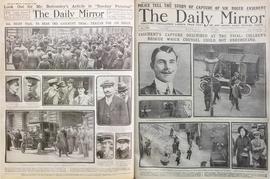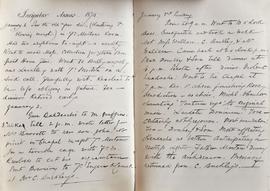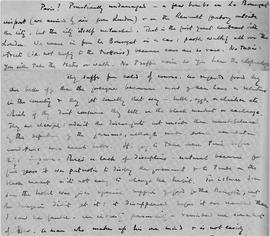Correspondence with Charles Bradlaugh
- IE CA CP/3/5/5/1/9
- File
- 1884-1891
Part of Irish Capuchin Archives
Correspondence of James Pearse with Charles Bradlaugh (1833-1891), 20 Circus Road, St. John’s Wood, London. The letters refer to various publications on atheist and secularist issues by Bradlaugh and to Pearse’s dealings with the former’s publishing house. In a letter (29 September 1884) Bradlaugh wrote ‘As we have started a completely equipped printing office at 67 Fleet Street in addition to our publishing department we shall be pleased if at any time you can favour us with any commands for printing’. A copy letter from Pearse to Bradlaugh (5 December 1884) noted that it has been ‘six weeks since my pamphlet “Socialism a curse” was issued from your office’. A letter (4 July 1885) from Bradlaugh reads ‘I have heard some of your pamphlets [are] highly spoken of by friends. I am glad you liked the Birmingham meeting’. A letter (2 July 1885) from Pearse to Bradlaugh reads ‘I am placed in a very paradoxical position – an image maker by profession and an image breaker by inclination’. He adds ‘I have been dangling – to use a scriptural phrase – between Hell and Heaven for the last twenty five years of my life: only that I reverse the meaning of the words: - everything appertaining to ecclesiasticism I regard as the former; and to be free of which, I regard as the latter’. A letter (7 July 1885) from Pearse reads ‘The fact is I am extremely disgusted with what I read in this morning’s papers, especially the action of the ungrateful Irish Party’. A letter (16 Sept. 1889) from Bradlaugh reads ‘it is quite impossible for me to print in the “National Reformer” anything which William Stewart Ross prints in the “Agnostic Review” as he has ‘circulated the very vilest libels about me’. In a letter (17 Sept. 1889) Pearse writes ‘I have written a letter to the “Agnostic Journal” upon [the] same subject (agnosticism and atheism) principally because my name was mentioned therein’.



